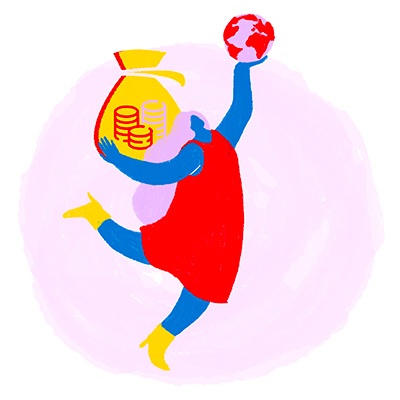In an era of globalisation, protectionism remains relevant in the world economy. Faced with geopolitical tensions and economic upheavals, protectionist policies are gaining even more ground. This dynamic increases costs, but above all, the complexity of international trade. It is now up to companies to deal with these new measures that influence their supply chains, competitiveness and supplier relationships.
What is protectionism?
By definition, protectionism aims to protect domestic industries from foreign competition. This involves imposing restrictions, both tariff and non-tariff barriers, on the trade of goods.
Through this approach, the idea is to favour domestic production, preserve local jobs, or reduce dependence on foreign supply chains. This can also allow certain industries the necessary time to convert, or even protect certain nascent industries that lack competitive advantage on the international market.
"Global economic links are evolving in ways we haven't seen since the end of the Cold War... After years of shocks, notably the COVID-19 pandemic and Russia's invasion of Ukraine, countries are reassessing their trade partners based on economic and national security concerns," recalls Gita Gopinath, Deputy Managing Director of the IMF.
For companies, protectionism has direct effects on cost management, supplier selection and contract negotiations. Therefore, the procurement function must remain vigilant, informed and adaptable to face these changes.
(Inset) An advanced composite index of world trade
The World Trade Organization has established the Goods Trade Barometer to provide information on global trade trends. The latest index stands at 102.8 - exceeding both the quarterly trend and the reference value (100). However, this must be interpreted with caution, as this increase could be temporary, stimulated by anticipated imports in the face of trade policy uncertainty.
The main protectionist measures
There are many protectionist instruments, whether they involve import duties or non-tariff barriers, such as import quotas and standards.
Import duties
Trade tariffs constitute the primary protectionist lever. This involves levying a tax on goods upon entry into national territory, provided they are not merely in transit.
There are various types of trade barriers, each with its own operating method: ad valorem duties, specific duties, compensatory duties, regressive duties, or export taxes. For example, ad valorem duties involve calculating taxation by applying a percentage based on the value of goods, while specific duties are based on the quantity of goods (weight, volume, number...) instead of value.
Import quotas
This tool imposes a direct restriction on the quantity of foreign goods that can be imported into a country. There are two main forms of quotas: absolute quotas that impose a limit on the quantity of goods that can be imported from other countries, as well as tariff quotas that establish a higher tax rate beyond a certain threshold.
Standards
The country can also impose health, technical or environmental standards to be respected for all local and imported products. This approach does not always have a protectionist character; it can also aim to protect consumers. However, it can also serve as a pretext to exclude imported goods.
There are many other protectionist measures, such as production and export subsidies, preference for domestic producers...
Protectionism: what impact on the supply chain?
Protectionist policies have a considerable impact on markets, characterised by rising costs, risks and logistical complexity. So many challenges to be met by the procurement function and supply chain.
Rising costs
Protectionist measures often result in higher prices for imported products. Procurement teams must then juggle reduced margins and find levers to limit the financial impact.
An increasingly complex supply chain
These changes can also disrupt long-established partnerships, forcing companies to turn to other suppliers. This increases logistical and operational complexities, whilst impacting overall efficiency.
Supply disruptions
Such measures can also put certain suppliers in difficulty. Beyond immediate partners, this can affect Tier 2, Tier 3 suppliers... And cause disruptions well upstream of the supply chain, where visibility is often limited.
Regulatory challenges
Protectionism is often accompanied by new regulatory obligations. Procurement teams must then ensure that their procurement strategies comply with the rules in force, which vary according to countries.
Procurement departments reorganise in the face of protectionism
In a context of protectionism, two main action levers emerge for procurement departments: adapting strategy and focusing on technology.
Rethinking strategy
Faced with protectionism, international companies have no choice but to reconfigure their strategies. In the 6th Supply Chain Risk Barometer published by Kyu, Laurent Giordani and Thibaud Moulin, both partners for the management consulting firm, share solution paths: "We must now build robust supply chains, which implies proactive risk management throughout value chains, strengthening links with strategic partners, diversifying critical sourcing sources and increased flexibility in managing needs, thanks in particular to the integration of advanced technologies, to gain visibility and responsiveness to disruptions."
All this implies having a complete mapping of one's supply chain, with all the sub-levels that this includes. Then, arbitrating according to different parameters. This is how the trend towards nearshoring and friendshoring returns to the forefront.
Equipping with technological solutions
To meet these challenges, digitalisation is key. In this regard, intelligent solutions are emerging to help companies manage procurement, monitor supplier risks in real time, optimise orders according to different tariff scenarios... Procurement management becomes more flexible, proactive and data-driven.
Ultimately, whilst protectionist policies challenge buyers, they also highlight the strategic role of the procurement function for the company. It then finds itself at the forefront to ensure cost control, operational continuity and risk management, whilst redesigning value chains.









